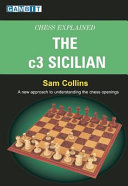Cricket Pitches The Science Behind the Art of Pitch Making 1st Edition by Shyam Bahadur Singh, Devendra Narain Singh, Sanjay Kumar Ray, HB Nagaraj ISBN 9789819929122 9819929121
$50.00 Original price was: $50.00.$25.00Current price is: $25.00.
Cricket Pitches The Science Behind the Art of Pitch Making 1st Edition by Shyam Bahadur Singh, Devendra Narain Singh, Sanjay Kumar Ray, HB Nagaraj – Ebook PDF Instant Download/Delivery: 9789819929122 ,9819929121
Full download Cricket Pitches The Science Behind the Art of Pitch Making 1st Edition after payment

Product details:
ISBN 10: 9819929121
ISBN 13: 9789819929122
Author: Shyam Bahadur Singh, Devendra Narain Singh, Sanjay Kumar Ray, HB Nagaraj
Cricket Pitches The Science Behind the Art of Pitch Making 1st Edition Table of contents:
1 Introduction
1.1 Definition of a Turf Pitch (a Turf Pitch Behaviour as Desired by the BCCI/ICC for Different Formats of the Match)
1.2 Pitch Behaviour Controlling Factors
1.3 Various Controllable and Non-controllable Major and Minor Factors Controlling the Pitch Behaviour
1.3.1 The Important Controllable Factors in the Hands of the Curators that Affect Pitch Behaviour Are
1.4 Pitch Surface Characteristics
1.5 Desired Properties of Cricket Pitch Soils
1.6 Statement of Problems with the Cricket Pitches in India and Abroad
1.7 Aim and Objective of This Book Based on Problem Identified
1.8 The Book’s Design to Accomplish the Aims and Objectives of This Book
1.9 Significance of This Book
1.10 Summary
References/Bibliography
2 Cricket Pitch Soil Mineralogy: The DNA of Cricket Pitch Profile
2.1 Introduction
2.2 Classification of Clay Minerals Suitable for Cricket Pitch Soils
2.3 Cricket Pitches: Why Clay Minerals?
2.3.1 Mechanics of Swelling of Clay Soils Suitable for Cricket Pitches
2.4 How Does the Pitch Soil Clay Mineralogy Determine the Physical and Chemical Behavior?
2.5 Classification and Categorization of Cricket Pitches Based on the Predominant Clay Minerals and the Exchangeable Cations
2.6 Methods of Identification of Swell-Shrink Clays Suitable as Cricket Pitch Soils
2.6.1 A Method of Distinguishing Clay, Silt, and Sand by the Hand-Feel Method
2.6.2 How to Identify Silt and Clay in the Field?
2.7 Laboratory Identification Methods for Selection of Cricket Pitch Soils
2.7.1 Mineralogical methods
2.7.2 Direct Methods
2.7.3 Indirect Methods
2.8 Case Study 2
2.8.1 Conclusions of Case Study 2
2.9 Summary
References/Bibliography
3 “Cricket Pitch Soil Inventory: Benchmark Soils for Indian Cricket Pitches”
3.1 Introduction—Why Benchmarking of Continental and Subcontinental Pitches?
3.2 The Purpose of Generating a Benchmark for Cricket Pitch Soils in India
3.3 State-Wise Distribution of Benchmarked Soils in India
3.4 Analysis of Selected Top 50 Benchmarked Pitch Soil Samples (State Wise)
3.5 Critical Analysis of Selected Benchmarked Pitch Soil Samples
3.6 Summary
References/Bibliography
4 Effect of Soil Chemical Properties on Cricket Pitch Behaviour
4.1 Introduction
4.2 What is Soil pH?
4.2.1 Acid Soils
4.2.2 Classification of Soil Acidity
4.3 Neutral to Alkaline Soils
4.4 Saline and Sodic Soils
4.4.1 Saline Soils
4.4.2 Saline-Sodic Soils
4.4.3 Soil Group Identification Based on ESP and ECe Values
4.5 What Controls the Soil pH?
4.6 Measuring Soil pH
4.7 Measuring Salinity and Alkalinity
4.8 Chemical Analysis and Interpretation for Some of India’s Most Important Cricket Pitch Soils
4.9 The Mechanism Through Which the Cricket Pitch Soil pH Affects the Pitch Behaviour at Different pH Ranges is as Follows
4.10 Management and Reclamation of Problematic Cricket Pitch Soils
4.11 Different Pitch Preparation Methods and Techniques Based on the Different pH Levels
4.12 Cricket Pitch Soil Behaviour Based on the Predominant pH Range and Exchangeable Cations
4.13 Classification of Cricket Pitch Soils Based on the pH Range and Predominant Exchangeable Cations of Subcontinental and Continental Pitches
4.14 Summary
References/Bibliography
5 Cricket Pitch Soil Water—An Elixir for Pitch Behaviour
5.1 Introduction
5.2 Types of Soil Moisture Available Within a Pitch Profile
5.3 Factors Affecting the Amount of Plant-Available Soil Moisture
5.3.1 Energy Concepts in Soil-Water Systems
5.3.2 Factors Affecting Gravitational Water
5.3.3 Factors Affecting Capillary Water
5.3.4 Factors Affecting Hygroscopic Water
5.4 Soil-Water Relationships
5.5 Type of Water Movement in Soil
5.6 Soil-Water Movement in Cricket Pitch Profile
5.7 Pitch Available Water Capacity/Content (PAWC)
5.8 The Science Behind the Art of Pitch Soil Moisture Retention, Movement, and Its Loss
5.9 Process of Wetting and Drying a Cricket Pitch Profile During Pitch Preparation
5.10 Relationship Between Soil Moisture and Pitch Behaviour
5.11 Role of Available Soil Moisture Within the Pitch Profile During Pitch Preparation
5.12 Summary
References/Bibilography
6 Cricket Pitch Grass: The Science Behind the Art of Turf Pitch Making
6.1 Introduction
6.2 Classification of Turf Grass
6.3 Functions of Grass in Turf Cricket Pitches
6.3.1 Grass as a Pumping System for Drying Pitches
6.3.2 Benefits of Turf Grass in Cricket Pitches
6.4 Summary
References
7 Cricket Pitch Soil Organic Matter: “Importance and Role of Pitch Soil Organic Matter (SOM) in Controlling the Nature and Behaviour of Turf Wickets”
7.1 Introduction
7.2 Importance of Soil Organic Matter (SOM) in Controlling the Pitch Behaviour
7.3 Important Distinct Characteristics of Soil Organic Matter (SOM)
7.4 Effect of SOM on Soil Properties
7.5 Summary
References
8 Cricket Pitch Soil Rolling Management—Integrated Rolling Management (IRM)
8.1 Introduction
8.2 Science Behind the Art of Cricket Pitches Profile Compression
8.2.1 Consolidation of a Cricket Pitch Soil
8.2.2 Consolidation and Soil Shrinkage
8.2.3 Consolidation Process
8.3 Time Lag During Compression of Clay
8.4 Factors Affecting the Pitch Profile Compression
8.4.1 Soil-Water Content
8.4.2 Type of Soil (Structure, Texture, Physical, Chemical, Mineralogy, etc.)
8.4.3 Cricket Pitch Soil Structure and Compressibility of Turf Pitches
8.4.4 Compactive Effort
8.4.5 Method of Compaction (Rolling Techniques and Schedules)
8.4.6 Rollers Do Not Dry the Pitches
8.5 Cricket Pitch Soil Compression Through Live Case Studies (Test/ODI/T-20 Matches Coordinated and Supervised by the Author as a Curator)
8.6 Summary
References
9 Cricket Pitch Behavioural Analysis Index (PBAI) and Pitch Behaviour Forecasting (PBF) Methods: Traditional and Conventional Methods vs. Scientific Methods Based on Recent Research and Developments
9.1 Introduction
9.2 Different Methods of Analysing, Interpreting, and Predicting Pitch Behaviour
9.2.1 Different Extreme Scenarios of Pitch Behaviour
9.2.2 Conclusions and Interpretation of Clegg Hammer Readings
9.3 Pitch Behaviour Analysis by Interaction with Experts
9.4 Cricket Pitch Behaviour Analysis Through the Measurement of Cracking or Crumbling Patterns
9.4.1 Benefits of Cracking and Crumbling (Wear and Tear) of the Pitch Surface
9.4.2 Mechanism of Shrinkage and Crack Formation
9.4.3 Classification of Cracks in the Cricket Pitch Soil
9.4.4 Measurement of Cracks
9.4.5 Wetting and Drying Cycles of Cricket Pitches
9.5 Case Study
9.6 Needs Further Clarification or Research
9.7 Conclusions
9.8 How to Analyse the Pitch Behaviour of Subcontinental and Continental Pitches
9.8.1 Pitches in South Africa
9.8.2 Pitches in Zimbabwe
9.8.3 Pitches in England and Wales
9.8.4 Pitches in New Zealand
9.8.5 Pitches in India and the Subcontinent
9.8.6 Pitches in Pakistan
9.8.7 Pitches in Bangladesh
9.8.8 Pitches in Sri Lanka
9.8.9 Pitches in the United Arab Emirates (UAE)
9.8.10 Pitches in the West Indies
9.9 Cricket Pitch Behavioural Analysis Through the Database Management System (DBMS) of Pitch Profile
9.10 Classification of Cricket Pitches Based on the Database Management System of a Pitch Profile, the Pitch Behavior Analysis Index (PBAI)
9.11 Categorisation of Cricket Pitches Based on DBMS, Pitch Behaviour Analysis Index (PBAI) / Pitch Behaviour Forecasting (PBF) Methods
9.12 Conclusions: Integrated Pitch Management (IPM)
References/Bibliography
People also search for Cricket Pitches The Science Behind the Art of Pitch Making 1st Edition:
j. r. crickets
cricket is famous for a visual model of what
sport science cricket
the art and science of pitching
pitch is controlled by science
Tags: Shyam Bahadur Singh, Devendra Narain Singh, Sanjay Kumar Ray, HB Nagaraj, Cricket Pitches, Pitch Making
You may also like…
Languages - English as a Foreign Language & Reference
Housekeeping & Leisure - Games: Chess
Romance - Other Romance Categories
Ruthless Traitor (82 Street Vandals #3) 1st Edition Heather Long
Romance - Other Romance Categories
Uncategorized
Business English for Beginners A2 Kursbuch mit Audios online als Augmented Reality Hugh Boyde
Romance - Contemporary Romance
Housekeeping & Leisure - Games: Chess
Education Studies & Teaching - Higher & Further Education











